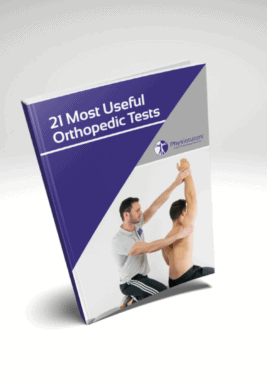Learn
Adson Test | Thoracic Outlet Syndrome Assessment
Thoracic Outlet Syndrome is defined as a neurovascular symptom complex associated with compression of the brachial bundle, which includes the brachial plexus and/or subclavian vessels. This compression may be caused by several anatomical structures in one or more of the following three compartments: the interscalene triangle, the costoclavicular space or retropectoralis minor space.
The Adson test is designed to decrease the space in the interscalene triangle. According to Gillard et al. in 2001 it has a sensitivity of 79% and specificity of 76%. Regarding the rather low accuracy values and due to the fact the study did not make use of MRI as the gold standard, the clinical value of this test is rather weak.
To perform the Adson Test have the patient in upright sitting position with his arms remaining supported in his lab. Then the patient rotates and extends his neck to the tested side. This is followed by a deep inspirational breath which is held for up to 30 seconds, as the examiner palpates for any changes in the radial pulse. A modification is described with the shoulder in 15 degrees of abduction and the head maintained in the testing position for 1 minute while the subject breathes normally.
This test is positive, in case the radial pulse abolished or if the patient’s familiar symptoms are reproduced.
Other common tests to assess for TOS are:
- Costoclavicular / Halstead Maneuver
- Eden Test
- Cyriax Release Test
- Roos Test / Elevated Arm Stress Test
- Tinel Sign
- Morley / Brachial Plexus Compression Test
- Wright’s Test
21 OF THE MOST USEFUL ORTHOPAEDIC TESTS IN CLINICAL PRACTICE

References
Like what you’re learning?
BUY THE FULL PHYSIOTUTORS ASSESSMENT BOOK
- 600+ Pages e-Book
- Interactive Content (Direct Video Demonstration, PubMed articles)
- Statistical Values for all Special Tests from the latest research
- Available in 🇬🇧 🇩🇪 🇫🇷 🇪🇸 🇮🇹 🇵🇹 🇹🇷
- And much more!








